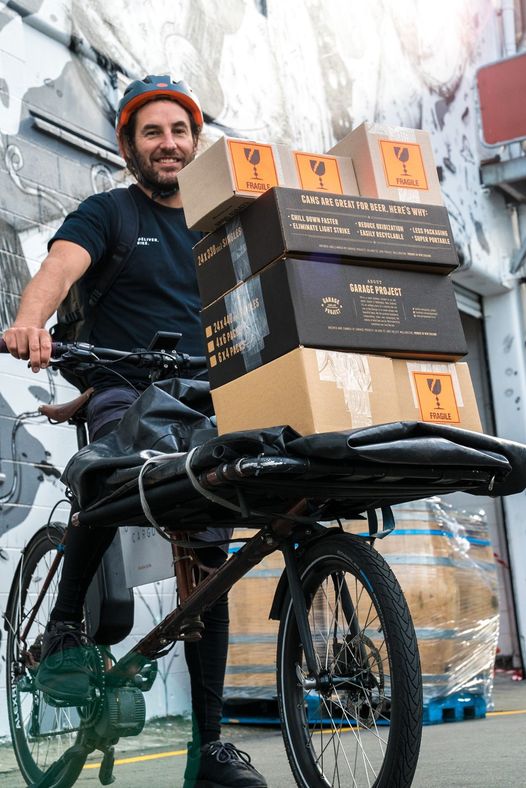Car-Freeing the Golden Mile: Getting the house in order
Getting Wellington moving will require Wellington talking, trusting, and planning. With major street change finally on the horizon, it’s high time to prepare and Liz Allen of Place Creative offers some guidance for Welly from Auckland’s experience.
Have your house in order
This doesn’t mean having a 100% certain plan with every minor contingency allowed for. Cities are complex and dynamic, so your plan should have the same ability to respond to changes. What you need is to build solid foundations for action, some internal homework and planning to set you on the right path.
Here’s 5 top tips for having your house in order…
1. Have your travel demand management live and ready
Know very intimately who’s bringing a private vehicle in for what, when, and why in the areas you’re carfreeing. Understand the barriers to mode shift; is parking too cheap? Are your buses unreliable? Is it safe for people to walk at all times of day? Is it too stressful to walk to Lambton Quay with a toddler?
Design and deliver a very targeted behaviour change campaign.

This is NOT a marketing activity with snazzy slogans, it’s a programme driven by data, supported by infrastructure, and communicated simply to the right people at the right time.
2. Do your loading + servicing homework
Deliveries are what keep businesses going day to day, and can quickly be the reason car free plans start to unravel.
Get in a tight huddle with all the logistics companies serving the area, and create a plan with them for how logistics should operate over the transition and medium terms.

Be ready to invest in pods, delivery zones, special bollards, cargo bikes, day and night schedules, and to prioritise deliveries over general purpose parking.
Do not “consult” on this, it is backstage foundational work.
Instead, partner with your business association, have a plan and resources to communicate with your businesses on the ground on where their loading zones are, what time they can be used and if they need to change their staff timing to coincide with fixed delivery times. This could be as simple as a mapped loading zone flyer circulated via a door knock or email.
This worked well during the construction of Karangahape Road’s Streetscape Enhancements in Tāmaki Makaurau. Due to the nature of the works, loading zones were regularly moved, so a weekly map was issued to businesses so they were alway aware of their closest zone. This built trust with businesses and a clear signal that the project was considering business operations as part of the project, while also not entertaining demands that uses of the street (like loading) continue to happen exactly as they always have.
3. Don’t discount accessibility needs
Some people will need to travel in private vehicles to access the Golden Mile. Considering various people’s accessibility needs from the get-go is critical to creating equitable places.
Don’t think about this as an add on at the end, hire a universal design expert as part of the core team. Listen to accessibility advocates, take their advice seriously or you will design people out of your nice new places – anything up to a quarter of NZ’s population.
4. Have dedicated stakeholder managers for the neighbours in each specific section of the works – and get them onboard now.
Lambton or Willis or Courtenay will each be a fulltime job, starting at a minimum 6 months ahead of when any works actually hit the ground, and continuing full time until the road cones are gone. Do not think for a moment you can lump this onto your existing stakeholder managers or engagement staff.
LGWM’s already (hopefully) learned this hard lesson from the previous round of engagement: neighbours, especially businesses, start from a position of fearfulness, and the burden is on you to give them a fair chance to understand your project and start to trust you.

5. Do it thoroughly, address challenges now, don’t waver.
Doing this background work is going to unearth challenges you will never have considered;
You discover that the water table under this street will actually be much higher with the guaranteed sea level rise… You discover that Vital Street Corner X has a 90-year-old caveat that will take half a mill of legal wrangling to remove…
Address the challenges head-on, get the right people in a room to figure it out, don’t kick the can down the road and hope for the best: unaddressed issues will be the things that land you splattered all over the Dominion Post’s front page.
Don’t let these challenges become the undoing of the project, let them be opportunities to show leadership, and keep you steering in the right direction.
Good luck Wellington!
Read more:
- the future of inner-city logistics (spoiler: it’s smaller and smarter)
- loading zones (and deep early engagement with neighbours): Auckland’s High Street pilot [3MB PDF]
- Construction impacts – the details matter
- Travel demand management in Wellington: congestion pricing hopefully on the table…?
- Mass transit (when completed) creates attractive zones for businesses – research from the US
Image Credits:
- Feature image: Auckland Transport
- Child playing with pigeons: ChrisGoldNY
- Nocar Cargo: Sustainability Trust
- Between Cafe: Bike Auckland
Leave a comment